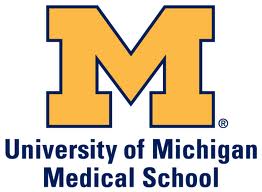From the LEI senior executive series on Lean Leadership
 |
 |
“To build our coach strength we bring together central coaches and area coaches twice a month as a learning collaborative.” |
As part of a continuing series on leading lean transformations, the Lean Enterprise Institute (LEI) will interview executives from a variety of companies to explore the challenges lean transformations present to senior managers.
Here are perspectives of Jack Billi, M.D., associate dean for clinical affairs, University of Michigan Medical School, professor of Internal Medicine and Medical Education, and associate vice president for medical affairs, University of Michigan.
Dr. Billi is leading a lean transformation of the University of Michigan Health System (UMHS), which encompasses 18,000 employees, an 817-bed hospital, 100 clinics, and a medical school with 700 students, 1,000 residents, and 1,600 faculty physicians. He is leading the transformation process through the Michigan Quality System (MQS) at UMHS. MQS draws from GM’s Global Manufacturing System and lean thinking principles to continuously improve quality, safety, efficiency, appropriateness, and service in healthcare. MQS also works with regional physician groups and hospitals. Dr Billi directs courses for introducing lean thinking in healthcare, including a joint educational program with the University of Michigan’s College of Engineering
LEI: Why did UMHS launch a lean transformation? What were the business reasons?
Dr. Billi: I felt we had lost some of our energy around institution-wide process improvement.
We had a Total Quality Management initiative in the late 1980s through the 1990s, but when a key leader left, it lost some momentum. There was still a lot of good quality improvement activity happening but it wasn’t a high visibility, centrally supported system for us to improve across the whole organization. We knew we still had defects in quality and safety, uncoordinated care, inefficiencies and waste. We saw lean thinking as a business strategy we could use to rally the whole institution around creating the ideal patient care experience and the ideal staff experience at the same time.As a lean practitioner once said, I felt I had been a great firefighter, but through lean thinking I discovered that I was also an arsonist. I had focused on one problem for a while, then moved to another, then another. I hadn’t realized there was a fundamental science to solving problems and for me lean thinking is the best articulation of this science. Lean thinking is a holistic philosophy that we could use throughout our organization to tie together the theory and practice of problem solving. As John Shook says, what Toyota has done is learn how to learn. We wanted to follow that track — to see process improvement as a learning activity — a people development activity.
LEI:Where did you begin the lean transformation?
Dr. Billi: We had eight projects that began almost simultaneously. General Motors assisted us with six of them. We wanted to see what happened when we tried lean thinking in the emergency room, in the operating room, in radiation oncology, and in a sports medicine clinic scheduling process. So we began our first year scattering projects across the organization. We had criteria — important problems, high visibility, opportunity to spread, a visible champion — but we did not have a strategic focus.
The initial projects were not tightly aligned with the institutional goals. We thought the effort would grow organically from these hotbeds of activity. It didn’t work out that way, but we learned a lot. Now we use a more systematic approach and focus on areas based on our institutional goals for the year.
LEI: What did you learn were your major challenges and what did you do about them?
Dr. Billi: I can describe three big challenges we face and our approach to them.
We had a big challenge with narrow versus large scope. We wanted to work on the really big, very important, cross-silo problems. Yet every time we scoped a project that big it overwhelmed the people who worked on it. So we learned to start small and build up. When we first started we commissioned a project on the inpatient discharge process. Later we narrowed the focus to a part of the process — discharge appointments — on one medical service. The results have been great. Two leaders have taken responsibility for planning how to spread the learning from that successful pilot to other clinical services.
Some folks in UMHS still have the misconception that lean transformation is an activity only done in three or five day value-stream mapping workshops. We need to help them see that they can use these concepts to improve their work every day. We have a great cadre of central and area coaches who help workers and managers see problems, analyze root causes, and plan improvement experiments. We need to work toward the day when more of our managers can do this all on their own — managers who understand and lead the lean effort themselves.
At first we didn’t capture the concept that the main purpose of workshops was learning. We used the value-stream mapping workshops primarily to improve a particular process. Now we understand that the purpose of the workshop is to improve people, so they learn skills, go back to their daily work, and improve their own processes. We’re trying to emphasize that more in our work now.
LEI: What did you find that you had to change about the way you manage and lead the organization in order to get the results from the transformation?
Dr. Billi: We had impermeable membranes surrounding some units so it was very difficult to make changes that affected operations across units. We’ve been slowly breaking that down. I think we’re getting to a tipping point where there are so many people supporting lean thinking as a business strategy that a lean management style is no longer unusual. Managers are increasingly working across units to improve the patient’s total experience.
We’ve started to use gemba experiences to help managers learn. Instead of conference room discussions about which problems will get our resources, we’re spending half those meetings going to the workplace, learning about the problems, seeing what’s being tried as countermeasures, and talking to front-line people about how things have or haven’t changed.
LEI: Have you found it necessary to make any organizational structure changes?
Dr. Billi: Not yet, but that may come at some point. We need to ensure our quality improvement resources are optimally coordinated. However, I don’t think we know enough about the current state, its problems, and their root causes to predict what the changes might be helpful. We need to “go and see, ask why, and respect people” to learn more about how our organization responds to problems and front line workers who need help solving their own problems. Doug Strong, the CEO of our hospital, has a good way of putting it: we need all employees to be able to say, “I know how to solve most problems myself, and I know how to get help when I need it.” Our central improvement resources are key to that goal. We are not there yet, but we are on the journey.
LEI: What behaviors have you found that are important to drive the lean transformation?
Dr. Billi: Leadership at all levels, including gently coaching people past cynicism to accept change. Healthcare has many cynics who feel they’ve been the victim of every improvement program of the month. Leaders have to show respect for improvement activities, provide time, and accept and learn from failures. We engage the leaders through the gemba reviews I mentioned before, and through using a leadership panel for each improvement project. The panel takes responsibility for backing the implementation plan. To build our coach strength we bring together central coaches and area coaches twice a month as a learning collaborative. They created standard work for training and improvement activities such as how they run a value-stream mapping workshop. We’re trying to experiment with ways to “ust do it” to try the improvements that can be done right away. We’re asking people to take responsibility, rather than focusing on who has the authority or control.
One of the other things we have seen is a unit saying they did a lean project and it was a total failure because nothing happened. Then I trace it down and discover that it was in a department that tried some improvement, called it a lean project, and the next thing you know there are people saying, “We tried lean and it didn’t work.” We have to help these folks improve the way they approach problems so they can succeed.
LEI: What have you found to be the key to sustaining improvements?
Dr. Billi: I think having tangible results that help patients in very tangible ways. Those are changes everyone in the organization can see. In radiation oncology patients with brain or bone metastases were previously required to visit us three times over several days to begin treatment; now they begin treatment the same day as the first call in. The staff also redesigned the work so they didn’t need to work overtime — they have a better work-life balance.
And you have to turn the gem a little differently for every person. Each worker has a different thing they’d like to see changed. We try to show them they can improve quality, safety, efficiency, appropriateness, and service, all at the same time. And our goal is to do this across our three missions of patient care, education, and research. MQS tries to help our doctors, nurses, and staff see they can improve the experience for their patients and their own experience at the same time.

